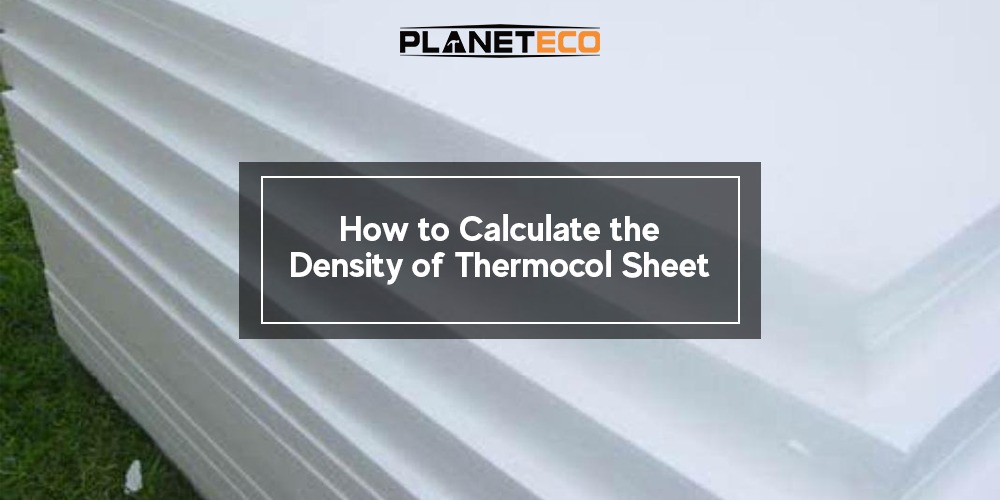Thermocol is commonly used in insulation, packaging, and as a material used for creating various items due to it being easily malleable and lightweight.
Thermocol or expanded polystyrene (EPS) is a very useful material used for insulation, packing, along crafting items due to its soft and lightweight characteristics. To choose the ideal material for a given procedure, it is highly essential to comprehend the density of a thermocol sheet.
Here is how they calculate the density of thermocol sheets and which information you have to consider when making projects using this material.
What is Density?
Density is the ratio of the mass of an object to its volume, most commonly represented in g/cm³ or kg/m³. It measures the denseness of the material one is using for construction purposes, for instance, in a factory. The formula to calculate density is:
Density=Volume/Mass
For thermocol sheets, this involves finding out the amount of mass and volume of the thermocol sheet needed.
Materials Needed
- Thermocol sheet
- Measuring scale or ruler
- Weighing scale
- Calculator
Step-by-Step Guide
1. Measure the Dimensions of the Sheet
This means that to calculate the volume of the thermocol sheet, you will require the length, width as well as depth of the thermocol sheet. Be sure to use a measuring scale or a ruler to get these dimensions in millimeters (mm) where possible; otherwise, use centimeters (cm).
Volume=Length×Width×Thickness
For example, if the thermocol sheet measures 100 cm in length, 50 cm in width, and 2 cm in thickness, the volume is:
Volume=100cm×50cm×2cm=10,000cm3
2. Weigh the Sheet
For measuring the mass of the thermocol sheet, use a weighing scale and record the reading in grams (g). Make sure the scale is authentic, and the sheet is free from any moisture as well as thoroughly washed.
For instance, if the exact weight per sheet is 150 grams, which is very common, particularly with paper sheets, then that is the mass you will be putting down on your formula.
3. Calculate the Density
So, you have the mass and volume. Plug them into the formula to calculate the density.
Density=Volume/Mass
Using the values from our example:
Density=10,000cm/3150g=0.015g/cm3
This control variable has a fairly high density, measuring 0.015 grams per cubic centimeter.
Factors Affecting Density
i. Manufacturing Process
However, there may be differences in density, which may occur as a result of differences in the manufacturing process.
ii. Material Quality
As it relates to factors that were beyond the researchers’ control, the quality of the polystyrene beads used was evidently a key determinant of the density of the final product.
iii. External Factors
Hence, factors such as humidity and temperature can be expectedslightly influence the reading of the product density.
Applications of Thermocol Sheets
Understanding the density of thermocol sheets helps in various applications:
i. Insulation
While comparing density thermocol sheets used in construction, higher-density thermocol sheets offer improved thermal insulation standards.
ii. Packaging
This is a definitive packing technique in which different densities are applied depending on the type/softness of the item.
iii. Crafting
One reason is that lightweight sheets are more appropriate because the sheets are used in crafts and decorations where manual handling is often involved.
The Key to Unlocking the Potential of Thermocol Sheets
Estimating the density of the thermocol sheets is easy once you have measured the size as well as weighted the sheet. This knowledge is vital in order to know which type of material to use as an insulator and packager, among other uses.
It, therefore, becomes easier to know the right one to use depending on the following guidelines. In conclusion, the following are some of the guidelines that you should consider when planning to buy thermocol sheets.
For more details you can view thermocol sheets and other building materials at PlanetEco.

